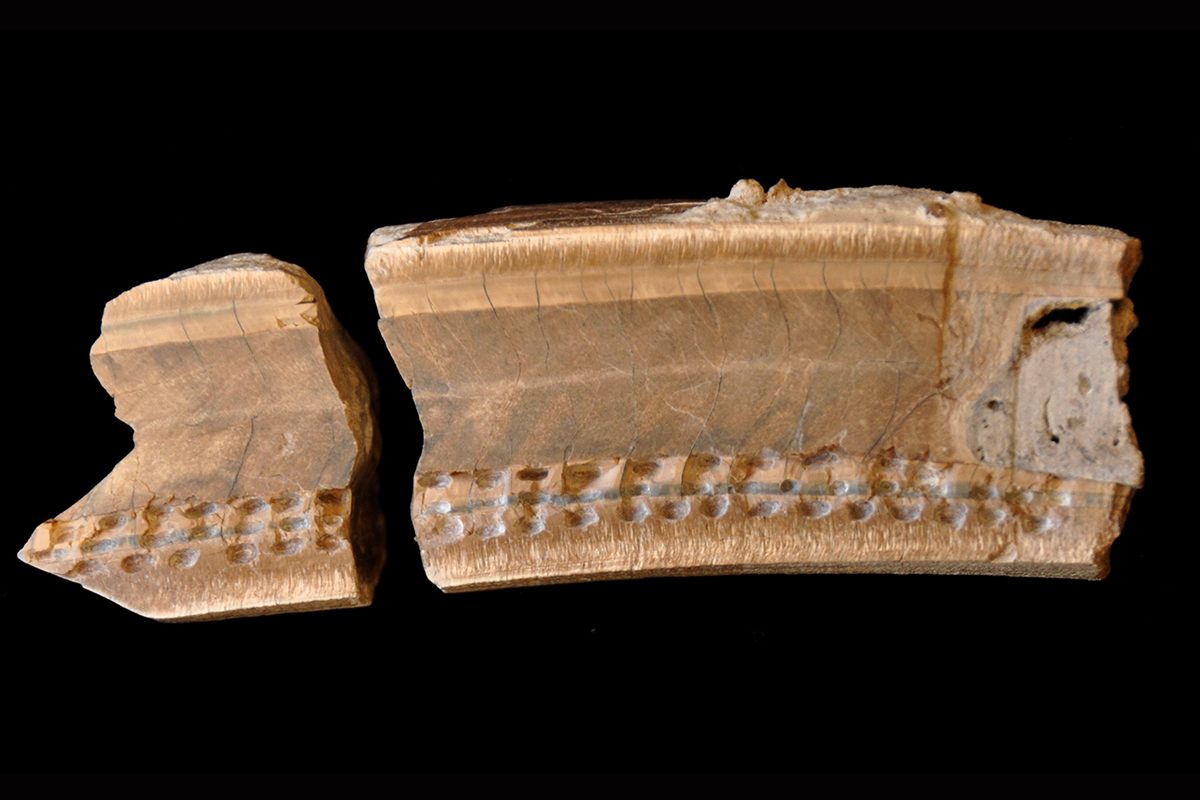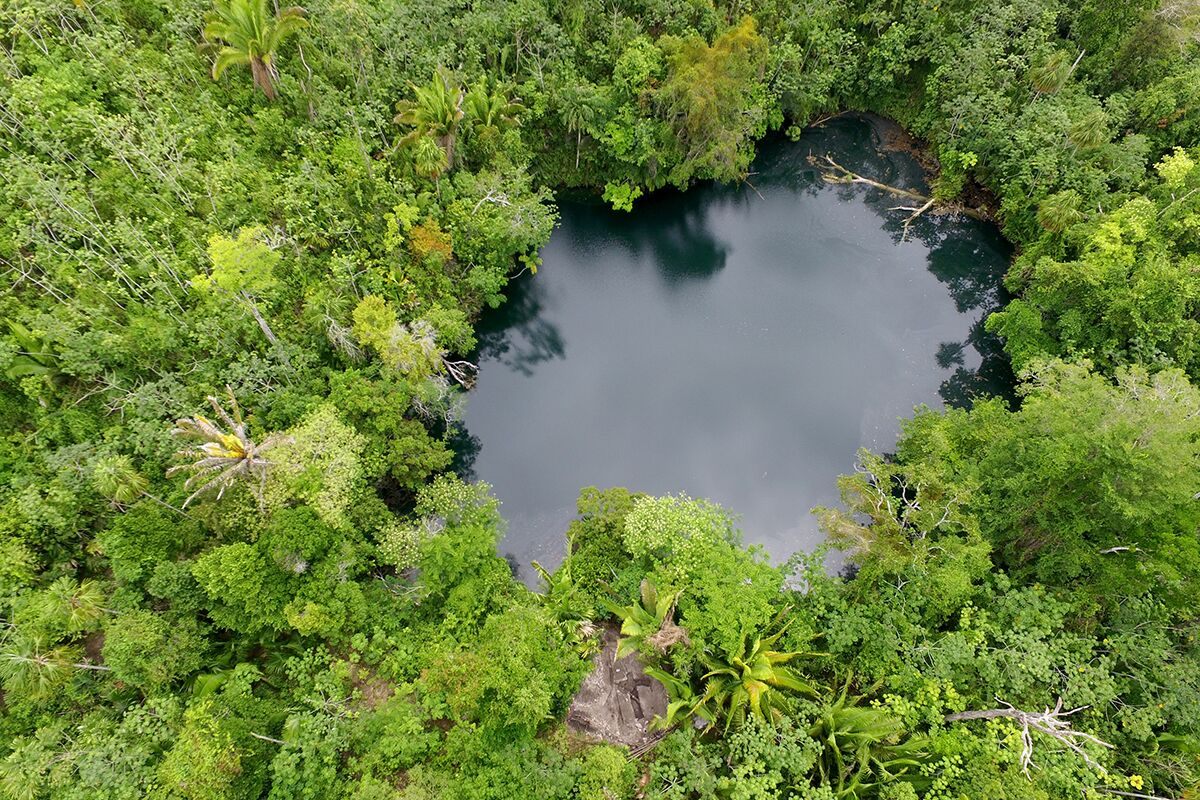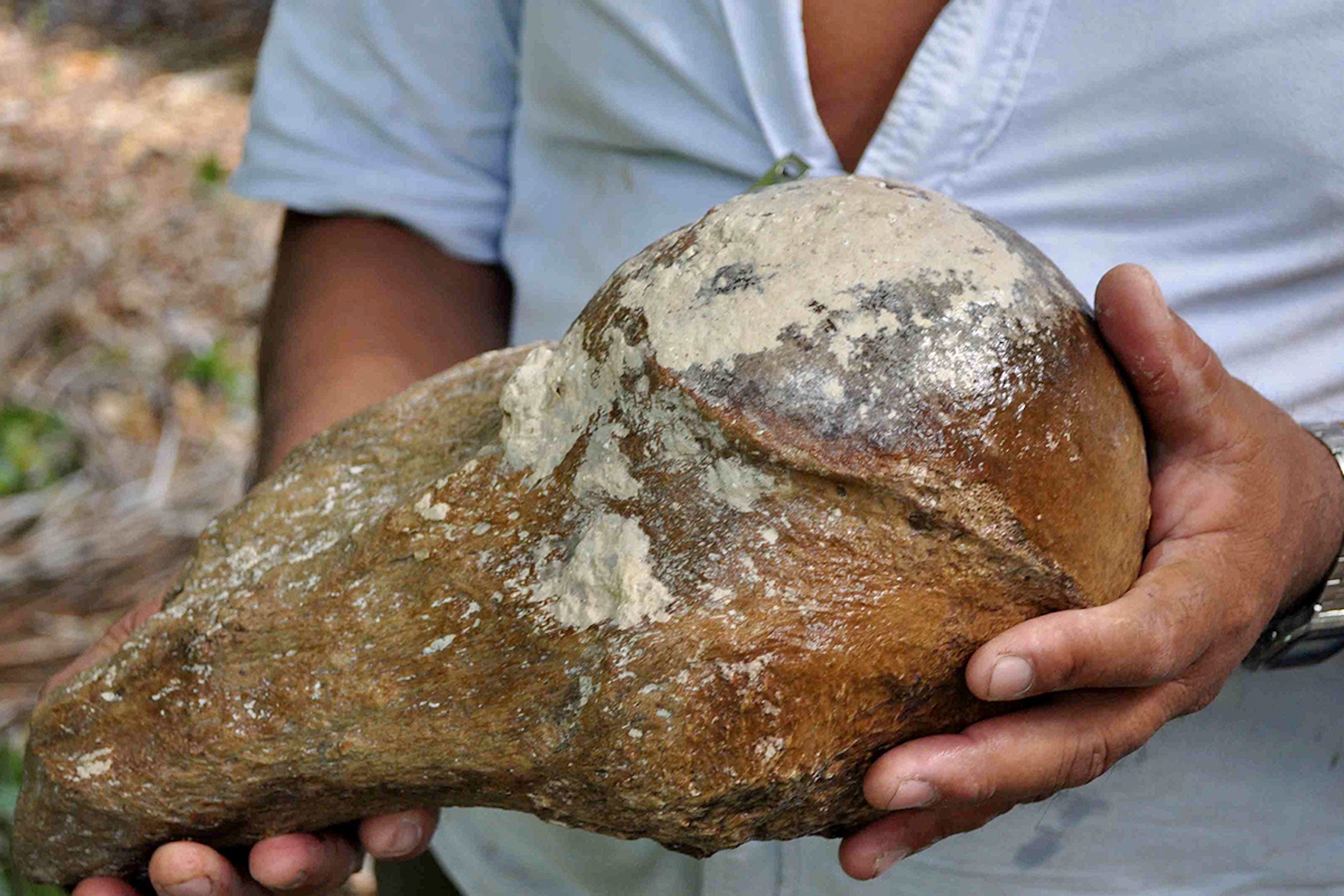Found: A Giant Sloth Tooth in a 200-Foot-Deep Sinkhole
The bone helps to explain how the creature stuck around for more than 10,000 years.

It’s fitting that a sloth would stay in place for 27,000 years. A team of researchers from the University of Illinois at Urbana-Champaign has located the remains of a giant sloth—which could have stood up to 13 feet tall—in a sinkhole in central Belize, and has used them to piece together aspects of the mega-sloth’s prehistoric lifeworld. They report their findings today in the journal Science Advances.
The team unearthed the remains—comprising a humerus, a femur, and a particularly massive tooth that is nearly four inches long and more than an inch wide—back in 2014, while trying to find Maya artifacts in the deep pool. One possible explanation for how the giant sloth fell about 70 feet into the sinkhole is that it was looking for water, at the time much scarcer in the region than it is today. During the Last Glacial Maximum, when earth’s glaciers were last at their thickest and sea levels at their lowest, those icy masses had stowed away much of the water that would have previously been available to the sloth and others, possibly leading it to look down the hole from which it never emerged.

The sloth tooth immediately offered the researchers their share of obstacles. First—unlike the teeth of other extinct giant mammals, such as mammoths—giant sloth teeth do not have enamel, the hard dental coating that can often teach researchers about an organism’s diet. Second, a good deal of the tooth had been fossilized, meaning that some of its original tissue and bone had been replaced with minerals.

To determine which parts of the tooth were still open to analysis, the team used “cathodoluminescence microscopy” to set the minerals aglow and isolate the surviving tissue. The lead author Jean Larmon was then able to analyze some 20 samples of orthodentin, the main substance in teeth. The samples illustrated more than a year of dental growth, and showcased the sloth’s impressive ability to adapt to seasonal and dietary changes. “What this study really tells us,” Larmon writes in an email, “is that these sloths were surviving in rather extreme seasonality in the Late Pleistocene, with just a three-month rainy season and a nine-month dry season, and that they were able to shift their diet with this seasonality” between the different kinds of plants available at different times.
“That means that they were pretty adaptable,” writes Larmon, which helps to explain how they were likely around for more than 10,000 years, and that their eventual extinction probably had to do with more than just climate-related stressors. Don’t mistake a sloth’s laziness for weakness; these guys can hold their own.











Follow us on Twitter to get the latest on the world's hidden wonders.
Like us on Facebook to get the latest on the world's hidden wonders.
Follow us on Twitter Like us on Facebook